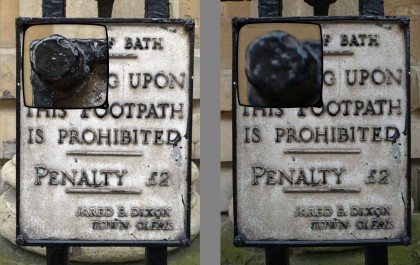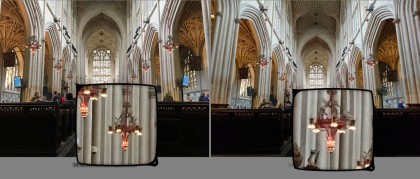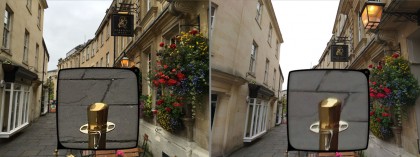Sony Xperia Z5 camera tested in depth
We test the Z5's camera in a range of real-life shooting situations and get some results we weren't expecting
We took a wide range of shots with the Xperia Z5 to find out how it would cope with a variety of shooting conditions. And to be absolutely sure our conclusions were objective we duplicated every shot using an iPhone 6S Plus.
The Z5's lens offers a much wider angle of view, which is very handy for interiors, landmarks and street scenes, though less good for portraits because of increased perspective distortion when you get close enough to fill the frame with your subjects.
"DP: Compared to the iPhone, the Z5 images are much softer at the edges."
Differences in timing and the angle of view of the two camera lenses meant that the comparison shots were rarely exactly identical, but they're close enough to draw some very interesting conclusions.
We've gone through these in some detail in the preceding pages, but here we're putting the Z5 images directly alongside the iPhone 6S Plus versions so that you can see the differences for yourselves.

The iPhone 6S Plus (left) has produced a much sharper shot than the Xperia Z5 (right). Look at the detail on the stud in the top left corner of the sign. This is where the iPhone's better edge definition really shows. Click here for a larger version.

In low light, the iPhone 6S Plus (left) leans heavily on its image stabilizer, using slower shutter speeds to keep the ISO low. The Z5 (right) used an ISO 2x higher for the same shot, and the blow-up sections show that it's lost any resolution advantage. Click here for a larger version.
Get daily insight, inspiration and deals in your inbox
Sign up for breaking news, reviews, opinion, top tech deals, and more.

In mixed lighting the iPhone's color balance (left) is often a little warmer than the Z5's (right). The iPhone has done a better job of holding on to the detail in these candles. Click here for a larger version.

This is the kind of subject that suits the Z5 (right) – large, bold details with well-defined edges. The blown-up sections show that in this instance it's captured more detail than the iPhone 6S Plus (left). Click here for a larger version.

Low light conditions definitely favored the iPhone 6S Plus (left). Again, the Z5 used a higher ISO setting, and its combination of edge softness and heavy noise reduction mean that almost all the detail in the poster on the wall has been lost. Click here for a larger version.

The iPhone really tripped up here (left) – it overexposed this tray of red chillies so that they came out a washed-out orange. The Z5, however, (right) produced beautifully saturated colors. Click here for a larger version.

Another poor color choice by the iPhone (left), which has given these radishes an oddly warm tone. Not being able to change the white balance setting can be an issue. The Sony's shot (right) looks great. Click here for a larger version.

The iPhone 6S Plus (left) has 12 million pixels, the Z5 (right) has 23 million – but is there really any difference in the actual level of detail captured? The Z5 photo has more pixels but the detail is more mushy. Click here for a larger version.

But as long as you don't spend your time zooming in on the details, the Z5's results (right) are rich and colorful. Again, the iPhone 6S Plus (left) has made a bit of pig's ear of this red engine case, making it a kind of orange color instead. Click here for a larger version.

This is the one that really made us draw breath. Look at the iPhone 6S Plus's rendition of the brass post at the bottom of the frame (left) compared to the Xperia Z5's (right). This is not a focusing issue – both were focused on the same point. This is the Z5's combination of edge softness and noise smoothing combining to create an almost textureless mess. Click here for a larger version.
Current page: Xperia Z5 vs iPhone 6S Plus
Prev Page 4K video and Timeshift Next Page Xperia Z5 camera verdict
Rod is an independent photographer and photography journalist with more than 30 years' experience. He's previously worked as Head of Testing for Future’s photography magazines, including Digital Camera, N-Photo, PhotoPlus, Professional Photography, Photography Week and Practical Photoshop, and as Reviews Editor on Digital Camera World.